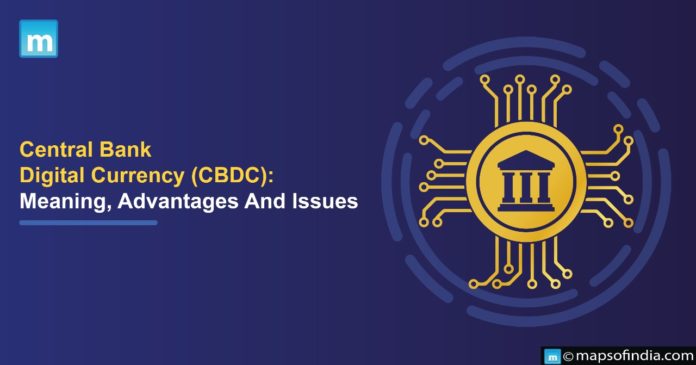The Reserve Bank Of India (RBI) launched India’s much-awaited Central Bank Digital Currency (CBDC) and has readied for retail users from December 1. Though RBI several times expressed worry about using digital currency, now it has finally introduced it, which stands both as a benefit and risk for the nation.
How do we understand Digital Currency?
Digital money is a digital form of cash that is done through the internet. This is a digital asset that is considered e-money. They are safe and liquid assets. In today’s developing society, crypto assets are attracting institutions as being a form of a digital asset in which people are investing more and more.
CBDC stands as a legal tender that the central bank issues. It is a digital form of currency which uses a blockchain mechanism. Moreover, it is not replacing any other form of currency, including fiat currency; rather, it will work as an additional payment method for users. RBI came forward with digital currency with the thought that it would enhance the digital economy of India, making the payment systems more efficient.
Advantages of using CBDC
• It helps reduce the management cost associated with physical currency.
• It is a step towards a cashless economy where everything is digitalised.
• With the launch of the CBDC pilot project, India is stepping up with other countries.
• It works as a support of innovation in payments.
• CBDC works as an improved way of cross-border transactions.
• It reduces the risk of storage associated with coins and notes.
• CBDC enables payments without taking into account any inter-bank settlement.
Issues related to Digital Currencies
- Few countries have digitalised their bonds. The race continues between regulating digital currency and stepping into the new world of order. Though various institutions have converted their bonds into digital assets, such as the World Bank for Reconstruction and Development and Commonwealth Bank of Australia, and the European Investment Bank, the most prominent one is EI Salvador. Various other nations are digitalising their capital at a slow pace.
- Although RBI has launched the CBDC project, the concern of safety stays. Indian market has already been facing trouble in cyber security, and an increase in digital currency increases the risk of cyber attacks.
- The use of digital currency requires people to have proper knowledge of it. Without creating mass awareness about digital currency, it will be a great challenge to use it.
- To use digital currency, a person needs to share some of his details and information, which is sensitive and can be misused if not taken care of. Digitalisation is undoubtedly bringing a boom in the economy, but a user needs to understand thoroughly about it before taking a step into this market. Proper knowledge and experience are required, along with the confidence to take risks.




